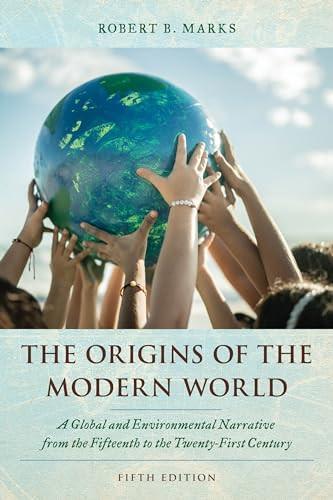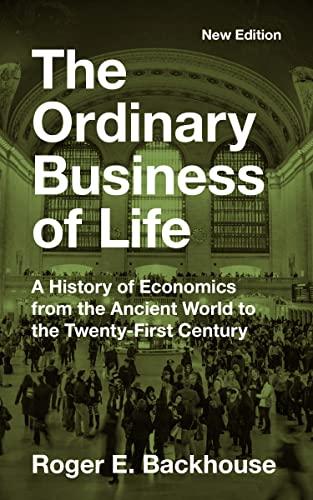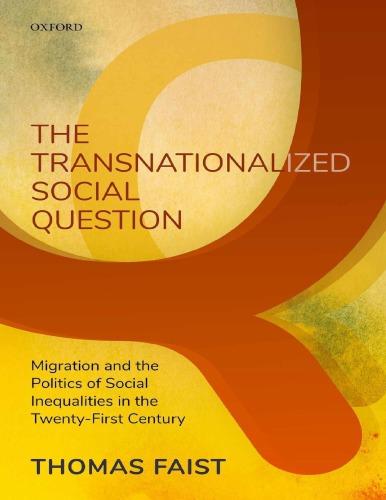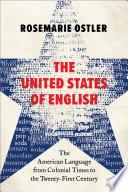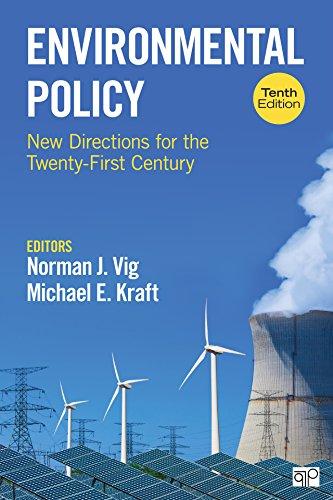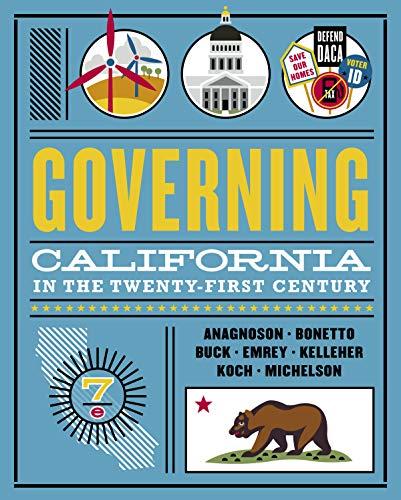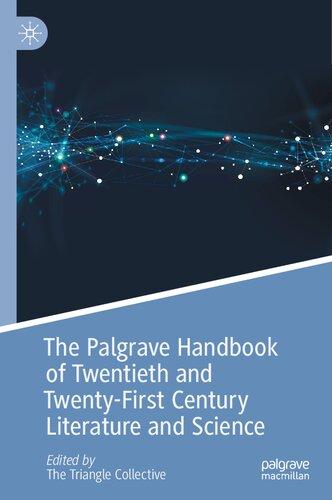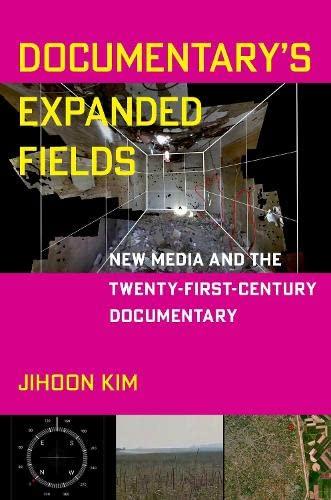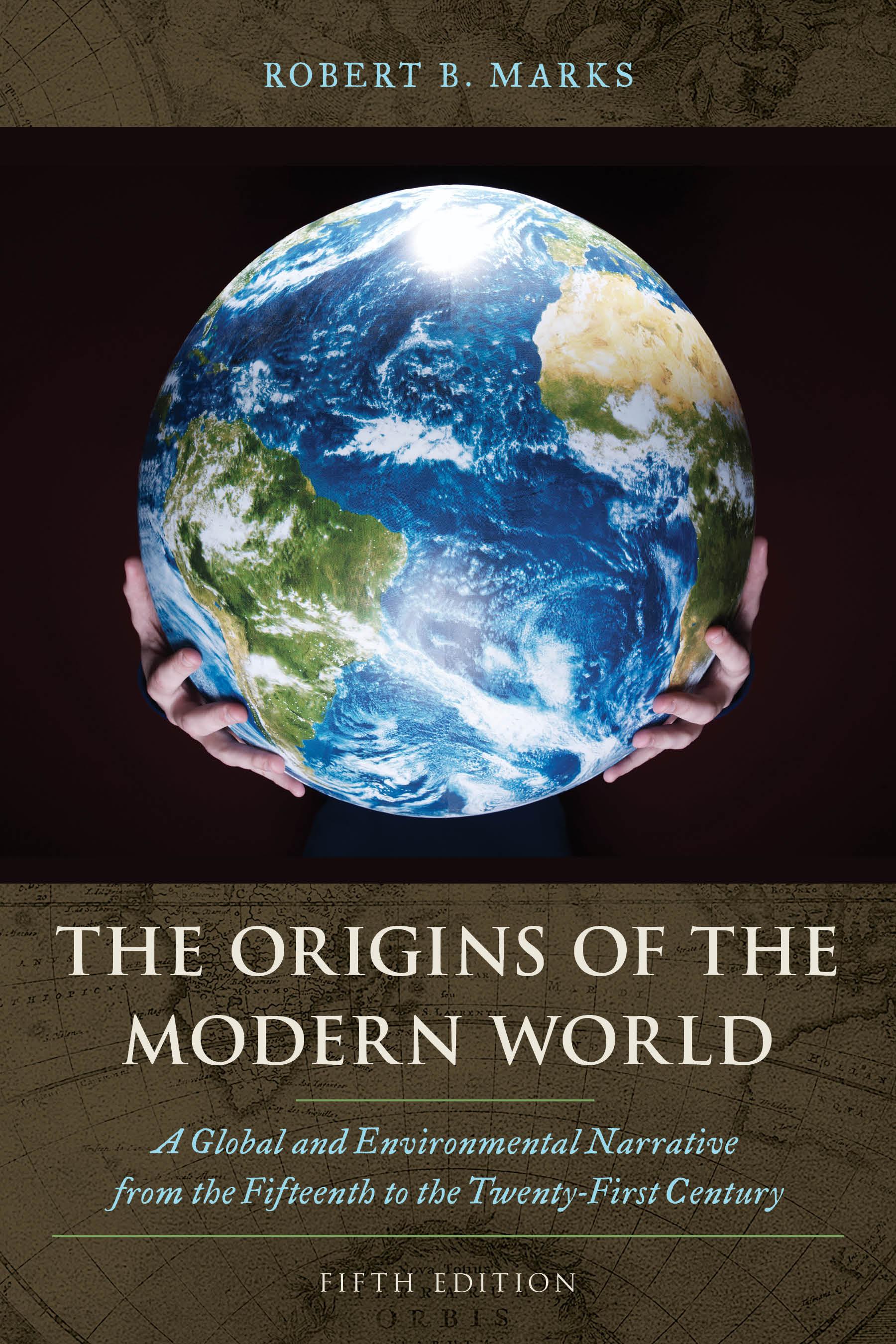The Origins of the Modern World
A Global and Environmental Narrative from the Fifteenth to the Twenty-First Century FIFTH EDITION
Robert B. Marks Professor Emeritus, Whittier College
Rowman & Littlefield
Lanham • Boulder • New York • London
Executive Editor: Ashley Dodge
Assistant Editor: Laney Ackley
Credits and acknowledgments for material borrowed from other sources, and reproduced with permission, appear on the appropriate page within the text.
Published by Rowman & Littlefield
An imprint of The Rowman & Littlefield Publishing Group, Inc. 4501 Forbes Boulevard, Suite 200, Lanham, Maryland 20706 www.rowman.com
86-90 Paul Street, London EC2A 4NE
Copyright © 2024 by The Rowman & Littlefield Publishing Group, Inc. First Edition 2002. Second Edition 2006. Third Edition 2015. Fourth edition 2020.
All rights reserved. No part of this book may be reproduced in any form or by any electronic or mechanical means, including information storage and retrieval systems, without written permission from the publisher, except by a reviewer who may quote passages in a review.
British Library Cataloguing in Publication Information Available
Library of Congress Cataloging-in-Publication Data Available
ISBN 9781538182765 (cloth) | ISBN 9781538182772 (paperback) | ISBN 9781538182789 (epub)
The paper used in this publication meets the minimum requirements of American National Standard for Information Sciences—Permanence of Paper for Printed Library Materials, ANSI/NISO Z39.48-1992.
Figures and Maps
3.1 Joint Involvement of European States in Great Power Wars, 1496–1514 and 1656–74
4.1 The Nemesis
5.1 Share of World GDP, 1700–1890
5.2 Share of World Manufacturing Output, 1750–1900
5.3 Population of India, China, and Europe, 1400–2000
5.4 Factory Smokestacks, Nineteenth-Century England
5.5 The Berlin Conference of 1884–85
6.1 Income Inequality in the United States, 1910–2010
Maps
1.1 The Eight Circuits of the Thirteenth-Century World System
2.1 Mercator’s “Ancient World”
2.2 The World circa 1400–1500
2.3 The Fifteenth-Century Eurasian and African Trading Worlds
3.1 The World circa 1760
5.1 The World circa 1900
6.1 COVID-19 Deaths per 100,000
Preface and Acknowledgments
Why a Fifth Edition?
The past may not change, but our history of it does. History—the narratives that historians write—is relevant to us because historians are influenced in their selection of what and how to write about the past by their engagement with issues and problems that confront us today.
As I was working on the first edition of this book in the year 2000, environmental historian J. R. McNeill published Something New under the Sun: An Environmental History of the Twentieth Century. In that book, McNeill observed that he thought that a hundred years hence, at the end of the twenty-first century, historians and others looking back at the twentieth century would be struck by the significance, not of the two massive world wars, the rise and fall of fascism and communism, the explosive growth of the human population, or the women’s movement, but of the changed relationship of humans to Earth’s natural environment. As an environmental historian myself, I found that observation compelling and incorporated an ecological theme in my narrative. The world holds many surprises, but one has to be how much faster McNeill’s prediction has arrived. It hasn’t taken a century, but just a few years, for the importance of the change in our relationship to the environment to thrust itself to the forefront of our understanding of the recent past, and to give the epoch in Earth history we are now in a new name—the Anthropocene.
When I first wrote this book, I did so because a new body of scholarship on Asia to which I contributed had made it possible to reconsider the usual
xiv Preface and Acknowledgments
answer to the question of the origins of the modern world: “The Rise of the West.” The new scholarship on Asia—which Jack Goldstone dubbed “The California School” because so many of us lived, worked, or published in California—raised questions about how and why the modern world came to have its essential characteristics: politically organized into nation-states and economically centered around industrial capitalism. Our findings that Asian societies had many of the characteristics others had seen as exclusively European and thus “causes” of the “European miracle” led us to argue that similarities cannot cause differences and to look for alternative explanations for how and why the world came to be the way it is. Andre Gunder Frank and Kenneth Pomeranz pulled this scholarship into two important books that changed the way we now understand how the world works, decentering Eurocentric explanations of history. One of the contributions of the first two editions of this book (2002 and 2006) was to bring to students and teachers a fresh narrative of the origins of the modern world that incorporated this new body of scholarship.
That continued to be the case with the third edition (2015), which, in addition, placed the environmental story line into an ever more prominent position in the book’s narrative. It was only in the 1980s that climatologists had begun to understand El Niño events and, in the 1990s, that rising levels of carbon dioxide coming from industry and tailpipes might cause the global climate to warm. From that initial realization that humans are forcing global climate change, we have now come to understand that humans are changing, overwhelming, or displacing other global processes of nature as well, on scales never before seen in human history. Readers or instructors familiar with earlier editions will notice sections on environmental issues throughout the book, as well as others highlighting Africa and income inequality. Those additions, combined with the placement of all notes at the end of the book, necessitated new pagination and a new index in the third edition.
In the late 2010s, new developments prompted me to offer a revised, fourth edition of this book (2020). The fallout from the financial crisis of 2008, known as “The Great Recession,” shook the faith of many around the world in the workings of the post–World War II global economy. Especially affected were those whose jobs vanished as factories closed or relocated to countries with lower wages and environmental protections, or residents of rural areas where farm incomes dropped and employment opportunities for young people eroded and many migrated to urban areas, fueling a sense of unfairness and anger toward those who allowed those downward pressures to continue to build. In many places around the world, the globalized economy and its easy flows of capital and labor have destabilized people’s lives, stoking
Preface and Acknowledgments xv opposition to the globalized world and to the elites assumed to be running it. Often these resentments come together in particular individuals who come to power as authoritarian nationalists (such as President Donald J. Trump in the United States and others in Brazil, Hungary, and Poland), and in movements such as Brexit in the United Kingdom, where a slim majority of citizens voted to leave the European Union.
Since then, earthshaking events, including the COVID-19 epidemic (2019–2023), Russia’s 2022 invasion of Ukraine, and the latest assessments of the growing dangers of global warming, led me to conclude that a new edition was necessary to place those developments into the long-term global context of Origins. Doing so also led me to re-envision much of parts III and IV of chapter 6, those addressing the post–World War II era. In addition to new sections on COVID and Ukraine, I have added new sections on the China Shock; the financial crisis of 2008 and the ensuing great recession; deaths of despair; opposition to globalization, deglobalization and renationalization; and “a conjuncture.” The conclusion to chapter 6 is new.
Elsewhere in the book, I have clarified my prose where needed, corrected a few errors, and added and discussed new scholarship on the Black Plague at the end of chapter 1, on the Indian Ocean world in chapters 2 and 3, on Native Americans in chapter 5, and on the 1920s in chapter 6.
My reason for recounting this story of the changing circumstances of this book is not to provide a rationale for another edition. Rather, it is to point out that history is living and relevant to current concerns, not the “dead hand of the past,” as some might see it. Both new scholarship and new issues and problems can prompt us to re-examine the past and to rewrite history to take account of changes in both. That way the stories we tell about the past continue to be relevant and helpful to us in the present. For if they weren’t, what would be the point? We need all the help we can get, and historical perspective is an essential aid to living in and through the present to a better future.
In addition to the intellectual debt I owe to Andre Gunder Frank, Kenneth Pomeranz, and John R. McNeill, I want to thank them for their personal involvement with the first edition of this book. Others who were instrumental in conceptualizing that project include Dennis O. Flynn and Arturo Giraldez, whose work following the silver trail around the world opened new vistas for me and other scholars and who organized the 1998 Pacific Centuries Conference at the University of the Pacific in Stockton, California, where we thrashed out ideas over lunches and dinners, and where the idea for this book originated. Others who read and commented on the first edition include my Whittier College colleagues José Orozco and Dick
xvi Preface and Acknowledgments
Archer; Steve Davidson, professor of history at Southwestern University; and the editor of the Rowman & Littlefield series World Social Change, Mark Selden. Erik Ching, Bradley Davis, Kathryn Davis, Peter Lavelle, Ray Patton, and David Pizzo provided helpful comments and offered important suggestions for adding clarity and helping students navigate Origins. For comments on this fifth edition, I thank Brad Davis and Xiaofei Gao. My dissertation advisor, Maurice Meisner, who was himself an intellectual historian, supported and encouraged me when I first made the turn to social and economic history, and then to environmental history.
For their response to the ideas in the book and the book itself, I want to acknowledge the first- and second-year students who have taken History 101, Introduction to World History, and read and commented on prior editions of Origins, and to thank my colleagues, Professors Elizabeth Sage, José Orozco, and José Ortega, who team-taught the course with me and from whom I learned much about the history of Latin America, Europe, and the Atlantic world. Like their predecessors, the history majors in History 480, Capstone Seminar, read widely and deeply on topics that found their way into this book, exploring environmental history (Spring 2010), the early modern world (Spring 2012), Eric Hobsbawm (Spring 2013), “the seventeenth-century global crisis” (Spring 2014), the Columbian Exchange (Spring 2015), the twentieth century in global, ecological, and historical perspective (Spring 2016), the environmental history of the early modern world (Spring 2017), and empire and environment in the modern world (Spring 2018). I especially want to thank the members of the Capstone Seminar (Spring 2019). These students read and critiqued the third edition and many of the draft revisions for the fourth edition. I found their comments and critiques invaluable. I say “thank you” to these students: Michael Atwood, Trent Beauchamp-Sanchez, Koren Dalipe, Brianna Drakopulos, Carlos Gonzalez, Madeline Kirkwood, Mikaela Malsy, Alicia Pennypacker, Jonathan Ramirez, Kelsey Sherman, Carly Stevens, Daniela Vega, Astra Yatroussis, and Jourdan Zelaya. Special thanks also go to Professor Kenneth Curtis, who invited me to meet with the members of his graduate seminar at California State University–Long Beach. They engaged me in a wonderful discussion of the ideas that draft revisions of this book sparked. Since the fourth edition was published, I have retired after forty-one years of teaching at Whittier College. Although I no longer have students with whom to try out ideas and draft revisions, I do remain an active scholar. I am especially grateful to Professor Ling Zhang who organized a March 2023 gathering of scholars at Harvard University to recognize my role in founding the field of Chinese environmental history. Many of those present also
Preface and Acknowledgments
attested to the importance of The Origins of the Modern World to their teaching and scholarship. I continue to work on environmental history, and my attention has turned to the Mono Basin in the Sierra Nevada Mountains of eastern California where I now live.
A grant from the National Endowment for the Humanities (FB-36592) supported the composition of the first edition. Philippe Beaujard kindly (and promptly) gave me permission to use one of his maps (see map 2.2). At Rowman & Littlefield, executive editor Susan McEachern was instrumental in bringing the first four editions to print, kept me apprised of feedback from students and faculty who read and used Origins, and encouraged me to get working on the fourth edition. Her work as my editor has now been taken over by Ashley Dodge and her assistant, Laney Ackley, and I thank them for all they have done to bring this fifth edition to completion. For their attention to detail, I want to thank Professor Robert Entenman and Yuhin Ng for pointing out errors in the second edition that needed correction, and to Scott Kistler for pointing out an error in the fourth edition. Any errors that remain in this edition are mine. Without my family, I would not be the scholar I am. My mother and father, neither of whom graduated high school, nonetheless loved reading and talking, and together they gave me the support and encouragement to follow my dreams out of a small town in northern Wisconsin to the University of Wisconsin. My son Robert received his degree in environmental sciences, is a professional freshwater resource geologist, and reads and critiques my drafts. Joyce Kaufman continues to offer companionship, love, and support, knowing what it means to be a publishing scholar at a college that values teaching effectiveness first and foremost. And as did our faithful and beloved dog companions Budd, Rembrandt, and Stanton, Seger now reminds me to look forward to each new day.
The Rise of the West?
1.5° Celsius. Or a little less than 3° Fahrenheit above preindustrial levels. That is the amount of global warming scientists tell us the world can accommodate without tipping into uncharted and dangerous territory for the stability of human societies.1 Over the past two decades global temperatures have steadily increased (twenty of the hottest years on record are in the past twenty-two years),2 with discernable effects on weather patterns—hotter and drier summers in some places, wetter and wilder ones in others. And sea level increases are already worrying the leaders and citizens of oceanic countries. Stronger hurricanes and typhoons as well as longer and more intensive droughts are increasingly likely, leading to the loss of food security for affected peoples and the social and political disruption that follows. We know that global warming is caused by human activities, mostly the burning of fossil fuels that release carbon dioxide (CO2) into the atmosphere, but also by methane (CH4) released from rice paddies and the guts of dairy and beef cattle.
Already the amount of carbon dioxide in the atmosphere has surpassed the safety level of 350 parts per million (ppm) and is now (in 2023) over 420 ppm and continuing to rise. The global average temperature is already 1.1° C higher than it was in 1870.3 Because carbon dioxide is a greenhouse gas, projections are that Earth is heading for warmer global temperatures and serious challenges faster than had been expected. In the view of James Hansen, until 2013 head of the NASA Goddard Institute for Space Studies, this is a matter of concern because most of what we have called human civilization has developed in a temperate global climate with atmospheric carbon dioxide
around 280 ppm. More than that, though, Hansen and other climatologists have concluded that the cause of the increase in atmospheric carbon dioxide is human action arising from industrialization over the past two centuries, and especially in just the past sixty years since the middle of the twentieth century.4 Young people around the world certainly “get it” (see cover photo) about the challenges posed by global warming and to the safety and security of the world that they and their children will inhabit, and they have been demonstrating and pressing their elders to “take action now!”5
The story of how the world got to the point where human actions could affect global environmental processes is complex but not mysterious. The tools of history can help us understand how and why the world we live in—the modern world—got to be the way it is. That understanding can be helpful as we search for ways to make the world a better, safer, more sustainable, and more equitable place for all people. But we need to take a long-term view to fully understand the past and its relationship to the present, and to envision alternatives for the future.6
Mostly, the story of the modern world revolves around the historical unfolding of five interrelated themes. The first involves the question of when, how, and why some parts of the world first industrialized, and how those processes were then picked up and used by people in other parts of the world. That story line is still unfolding, and it gets intertwined with another, that of the emergence of nation-states as the principal way people over the past two centuries have organized themselves politically. Industry initially gave some states in western Europe and North America increasing wealth and power—so much so that a large and growing gap emerged between the wealthiest and poorest parts of the world. The story of that “gap” and its consequences is the third of the themes taken up in this book.
The fourth theme explores the interrelationship between the environmental context in which those elements of the modern world emerged and the ways people and their actions in turn changed and continue to change the environment. The imprint of humans on our Earth’s ecosystems has become so great that some scholars argue that we are entering a new geologic era—the Anthropocene—in which “humankind . . . has become so large and active that it now rivals some of the great forces of Nature in its impact on the functioning of the Earth system.”7
And because each of those first four themes needs to be understood in a global context, a fifth significant theme is the long-term process of globalization.
Just 250 years ago, the human population of the world was less than one billion people, and two Asian countries—India and China—accounted for
two-thirds of the world’s economic output. In the brief span of history since then, global population has grown to over eight billion people (on our way to nine billion plus by 2050), and the world saw a great reversal of fortune: where once Asians held most of the economic cards, for the past two centuries, it has been primarily Western countries and Japan. In just the past thirty years, China has risen to be the second largest economy in the world, and its assertions of regional and global leadership have been challenging the U.S. and its views of how the global order should be structured. The question centers on how that great reversal happened, and how China has subsequently risen once again. How did industry and European-style countries called nation-states—rather than highly developed agrarian empires like China and India—come to define our world? Are the last two centuries of European and American economic and political domination a relatively brief aberration? And is China’s (or all of Asia’s) recent rise a return to the previous world order? Or to a newly reorganized global economy? Russia’s invasion of Ukraine in 2022 raises a similar question about the stability of the system of sovereign states.
Thus, to understand our world, we have to understand not just how nation-states and industry came to shape the modern world, but how and why those European ways of organizing the world came to dominate the globe. Explanations abound, but for most of the past two centuries, the predominant explanation in the West, the United States included, has been “the rise of the West.” As we will see, recent research has shown that that explanation is no longer persuasive, but because it is probably the one most readers may be familiar with, I will take some time exploring it and providing the basis for constructing an alternative explanation.
The Rise of the West
The concept of the rise of the West provides both a rationale and a story line that purports to explain not just the modern world, but why it is defined by primarily European features. The idea behind it is fairly simple and began to emerge shortly after the Spanish conquest of the Americas, during the Italian Renaissance of the sixteenth century. Europeans were quite astounded to see hundreds of Spanish conquistadors vanquish huge and very wealthy American civilizations, in particular the Aztecs and the Incas. Being ignorant of the germ theory of disease and the cause of the “Great Dying” in Mexico, where nearly 90 percent of the central Mexican population of twenty-five million succumbed to European diseases such as smallpox and influenza, Europeans first attributed their superiority to their Christian religion. Later,
during the Enlightenment of the seventeenth and eighteenth centuries, they attributed their superiority to a Greek heritage of secular, rationalistic, and scientific thought.
In the late 1700s, this story line continues. The French Revolution of 1789 reinforced the awareness in European minds not just that Europeans were different from the rest of the world, but also that Europeans were “progressing” rapidly while the rest of the world appeared to be stagnating, that Europeans were somehow exceptional—better, even—than the rest. Nineteenthcentury European historians, impressed with what many considered to be the universal appeal of the ideals of the French Revolution—egalité, liberté, fraternité (equality, liberty, and brotherhood)—looked back to the ancient Greeks, their institutions of democracy and republics, and their rationalistic bent toward understanding the natural world in scientific, not religious, terms. In this early telling of the “rise of the West,” the story is somewhat like a relay race, with the ideas of democracy that arose in Greece passed off to the Romans, who dropped the baton (the fall of the Roman empire followed by the so-called Dark Ages), but Christianity was then on the scene to pick it up and run with it, creating a distinctive European culture during feudal times. The ancient Greek heritage was rediscovered in the Renaissance (“renewal”), elaborated during the Enlightenment, and ultimately fulfilled in the French and American revolutions and “the rise of the West.”
If the West was “rising” during the eighteenth century, during the nineteenth its ascent was completed. As the Industrial Revolution of the late eighteenth and early nineteenth centuries was just beginning, the classical British political economists—Adam Smith, Thomas Malthus, David Ricardo, and their followers—developed another strand to be woven into the story of the rise of the West: the ideas of capitalist industrial development as “progress,” the West as “progressive,” and Asia (and by implication, Africa and Latin America, too) as “backward” and “despotic.” To be sure, contrasts between the virtues of the West and the flaws of the East—the Orient—may have dated back to the Greeks, but eighteenth-century Europeans had been impressed with the wealth and governance of Asian countries, especially China. As the pace of economic change accelerated in nineteenth-century Europe, while much of Asia was in internal decline, European social theorists came to view the West as dynamic, forward looking, progressive, and free, and Asia as stagnating, backward, and despotic.
Even Karl Marx and Friedrich Engels, the most powerful critics of the new capitalist world order, believed that nineteenth-century European expansionism was bringing “progress” to the rest of the world. As they wrote in The Communist Manifesto, published in 1848:
The [European] bourgeoisie, by the rapid improvement of all instruments of production, by the immensely facilitated means of communication, draws all, even the most backward, nations into civilization. The cheap prices of its commodities are the heavy artillery with which it batters down all Chinese walls, with which it forces the underdeveloped nations’ intensely obstinate hatred of foreigners to capitulate. It compels all nations, on pain of extinction, to adopt the bourgeois mode of production; it compels them to introduce what it calls civilization into their midst, i.e., to become bourgeois themselves. In one word, it creates a world in its own image.8
Of more importance for Western conceptualizations of their own history, though, has been Max Weber, a German sociologist who wrote around the turn of the twentieth century. Where Weber shared with Marx a fascination with explaining how and why capitalism developed in Europe—and only Europe—Weber parted with Marx in his explanation. Instead of focusing as Marx had on “materialist” explanations, Weber looked to those aspects of Western values and culture, in particular the rationalism and work ethic that he associated with Protestantism, as being crucial to the rise of capitalism. But rather than basing his ideas about the rise of the West solely on studies of the West, Weber actually investigated Chinese and Indian societies, compared them with Europe, and concluded that those two societies at least, and by implication all other non-European societies, lacked the cultural values necessary for capitalism. Nonetheless, they too could “modernize,” Weber thought, but only by going through a painful process of cultural change, getting rid of their cultural “obstacles” to capitalist development.
“The Gap” and Its Explanations
Since the mid-nineteenth century, then, European social theorists have been aware of a growing gap between the industrialized countries and the rest of the world. Believing both that western Europeans—and they alone—had unlocked the secret of modernization,9 and that others too could learn, twentieth-century followers of Smith, Marx, and Weber have propounded a “diffusionist” theory of how world history has unfolded. That theory goes like this: Europeans found out how to get rich first by industrializing. Japan and a few other places learned from the Europeans and caught up, and eventually every other place on the globe will too (as the story of “China’s rise” since the 1990s appears to show), as long as they identify and eliminate the local institutions and cultural traits that prevent them from becoming modern. By the end of the twentieth century, these ideas appeared to have been vindicated when the Soviet Union collapsed and Communist China began
adopting market reforms and sanctioning the ownership of private property. “The end of history,” political theorist Francis Fukuyama declared in 1992 under the assumption that the values and institutions of the West had triumphed globally.10 The spread of the global free trade, the proponents of “globalization” argued, would bring the benefits of economic development to even the poorest people and nations in the world, everyone would benefit, and world peace would prevail. To that extent, history would end.
Viewed now in the third decade of the twenty-first century, these ideas appear to be quite unconvincing in light of the facts that the gap between the wealthiest and poorest parts of the world continues to grow and the environmental consequences of industrialization are coming home to roost. However, the fact that eighteenth- and nineteenth-century European theorists—Smith, Malthus, Ricardo, Marx, and Weber—all accepted the idea of European exceptionalism and sought, as one of their primary intellectual goals, to explain it, is important.
These men were the founders of modern social science theory, and in the twentieth century virtually all of the social sciences, in particular sociology and economics, incorporated the idea of European exceptionalism into their basic assumptions. As historians sought to become more “scientific” in the twentieth century by adopting and adapting the insights of this social science to historical inquiry, they too became captivated by the search for the origins and causes of European exceptionalism. But as we will see, Europeans were not exceptional, and one of the most important points about the history of the world until about 1800 is the broad comparability of Asia with Europe, showing more surprising similarities than meaningful differences. Nevertheless, the search for answers to why Europeans were perceived as exceptional and hence ultimately superior continues among historians today, even though many now think it is the wrong question to be asking.
In the post–World War II era, this new historical search has produced an impressive body of scholarship looking for the key to what one economic historian has called “the European miracle.”11 These scholars begin with what they see as the fact of the rise of the West but propose differing solutions to the questions of when and why the “rise” or the “miracle” began. The question of when will be discussed first, since in many ways it is relevant to considerations of why.
Adam Smith saw 1492 and 1498 (the voyages of Columbus to the Americas and of Vasco da Gama around Africa to India, respectively) as the most significant years in history. As Smith wrote in The Wealth of Nations (1776): “The discovery of America, and that of the passage to the East Indies by the Cape of Good Hope, are the two greatest events recorded in the history
of mankind.” Marx, too, saw these two dates as crucial, as have several twentieth-century scholars working in a Marxist tradition who have pointed to the subsequent European colonialism, slavery, and exploitation of colonies in the Americas and Asia as the primary explanations for the rise of the West. Many non-Marxists have contested the idea that Europe’s rise was a result of the exploitation of others,12 an inconvenient and awkward fact if true, and instead have turned their attention to those aspects of European culture that predate European colonialism, beginning with the Spanish conquest of the New World.
To avoid the possible embarrassment of attributing the rise of the West to its colonial ventures, and not its inherent virtues, much post–World War II scholarship on the origins of the rise of the West has looked farther back in European history, in some cases as far back as the Middle Ages in the eleventh and twelfth centuries, or yet earlier to the ancient Greeks, for factors that could be attributed only to Europe’s own exceptional development. Factors that have been identified, in addition to the cultural values discussed by Weber, include environmental ones (temperate climates promote hard work, or poor soils stimulate agricultural innovation), technological ones (plows, stirrups, or reading glasses), political-military ones (feudalism leading to absolute monarchs and then nation-states and the evolving technology of war), demographic ones (small families promote capital accumulation), and in the minds of several historians, combinations of all or some of these.13
The implication of this body of scholarship is that Europe possessed some unique characteristics that allowed it—and only it—to modernize first, and hence gave it the moral authority and the power to diffuse “modernity” around the globe where cultural, political, or economic “obstacles” prevented modern development from occurring indigenously. Hence, this story line purports to explain, justify, and defend the rise of the West to global dominance. Just how wrongheaded this theory is will become clearer as the industrial superiority of much of Asia to Europe, at least prior to about 1750, is revealed in the course of this book.
In addition to the recent scholarship on Asia that is changing our understanding of how and why the modern world developed, another perspective is changing our views of the consequences of that development— environmental history. Broadly conceived, environmental history looks at the mutual interactions of humans with our environment—the ways environments conditioned human societies, the ways humans in turn changed their environments to meet human needs, and then the ways those environmental impacts created new sets of problems for humans to confront. This new field emerged around 1970 as mounting environmental problems such
as industrial pollution of the air, water, and soil in the United States and Europe prompted historians to ask how and why that had happened. More recently, as the impact of humans on global ecological processes such as the carbon and nitrogen cycles has become apparent, environmental historians have adopted increasingly global views.14
Before turning to the question of why all this matters, let me first say a few words about geographic units used in this book. Earlier I mentioned a comparison between “Asia” and “Europe,” implying both that these units are comparable and that they have some kind of unity that distinguishes each one from the other. That assumption is problematic, mostly for Asia, because of the immense variety of societies it includes, ranging from China and Japan in East Asia, through the pastoral nomads of Central Asia, to India in the south and the Muslim-dominated West Asia (Middle East). Even Europe has little coherence if it is taken to include everything from Portugal to Russia. Moreover, until very late in our story (at least until 1850 or so), Asia contained about two-thirds of the world’s population and was larger than Europe in virtually every respect. To that extent, Europe and Asia were not comparable. Furthermore, one of the most important points I make in this book is that understanding the origins of the modern world requires taking a global view, first of how the vast continent of Eurasia, coupled with Africa, interrelated, and then after 1500, how the New World fit into the story. Finally, even the geographic terms “China,” “India,” and “England” or “France” conceal much variation within their borders—different peoples, many languages or dialects, and vast differences in wealth and power. Nevertheless, I will use these geographic terms to begin locating the story, but readers should be aware that generalizations based on large geographic units will not be true at all times and places within the places named, and that in reality what was truly comparable occurred in parts of China, parts of England or the Netherlands, and parts of India.
Readers may be wondering why the issue of the rise of the West matters. Indeed, why even study history? The brief response is because our understandings of the past—who we are, where we came from, why we are here—inform our definitions of who we are in the present and have real implications and applicability for actions taken by us or in our name to shape the future. And for that, taking a long-term view of the past—what the late French historian Fernand Braudel called the longue-durée—will be helpful for placing into context and critiquing explanations about how the world got to be the way it is.15 The ideas developed by the story of “the rise of the West” to explain the nature of the world we live in, especially the values of marketplace capitalism and democratic institutions, are thought to have
originated uniquely within Western civilization, yet to have universal applicability—to be “good,” not just for the West, but for everybody. Following that assumption, the solution to virtually all problems in the world today, at least according to some U.S. and European political leaders, is the adoption of private property and free markets.16 Thus, to Russia after the collapse of the Soviet Union, to the communist leaders of China, to the leaders of Mexico, Nigeria, and Indonesia, Western leaders have said that the answer to any and all problems they face is “more democracy and free markets.” The idea is that the institutions and values that supposedly propelled the rise of the West are universal and can—indeed, must—be adopted throughout a globalized world. That is a political agenda.
But what if this way of looking at the making of the modern world—the rise of the West and the spread of its system on the basis of its supposed cultural superiority to the rest of the world—is wrong? That is the possibility raised by a new body of scholarship, especially over the past forty years.
No longer do all historians picture the world as merely a continuation of universal and necessary trends that began centuries ago in Europe. What many are seeing instead is a world in which population, industry, and agricultural productivity were centered in Asia until around 1750–1800. The European world of industrial capitalism and nation-states is thus both quite recent and a reversal—for how long, though, remains a big question—of long-standing historical trends favoring Asia.17 Europeans may have painted a picture of the rise of the West over this original one, but the patterns of Asian strength and economic vitality are beginning to show through once again. Artists call this concept of one painting showing through an original painting or parts of it pentimento. As this book intends to show, the more we look at the world and its past through a new light, the more the pictures painted in our minds by the rise of the West will reveal another, and rather different pattern, underlying. To see it, though, we will have to begin shedding our Eurocentric perspectives.18
Eurocentrism
One critic has said that the idea that “the West has some unique historical advantage, some special quality of race or culture or environment or mind or spirit, which gave this human community a permanent superiority over all other communities” is a myth—the myth of Eurocentrism.19 Another has seen Eurocentrism as an ideology, or a distortion of the truth, used by the West to mask its global dominance,20 and still another deems it a “theoretical model,” one explanation among several for how the world works.21 In this
section, we will examine two aspects of what critics call Eurocentrism: first, what it is; and second, the extent to which it can be seen as wrong, a myth, an ideology, a theory, or a master narrative.
The essence of Eurocentrism, according to the critics, is not merely that it views history from a European point of view (the “centrism” part). An ethnocentric perspective recognizes that there are many different peoples and cultures in the world, but that mine is better because it arises from my people and culture. Eurocentrism also emphasizes the superiority of Western culture—all that is good, progressive, and innovative starts only in Europe—but it also sees that package as having universal applicability: it is not peculiar and limited to Europe, but spread to encompass much of the globe by the twentieth century.
Going a bit deeper, critics say, Eurocentric views of the world see Europe as being the only active shaper of world history, its “fountainhead,” if you will. Europe acts; the rest of the world responds. Europe has “agency”; the rest of the world is passive. Europe makes history; the rest of the world has none until it is brought into contact with Europe. Europe is the center; the rest of the world is its periphery. Europeans alone are capable of initiating change or modernization; the rest of the world is not.
On a deeper level yet, according to critics, Eurocentrism is not just a belief in the past or present superiority of Europe but also is “a matter of . . . scholarship” (i.e., of established “fact”).22 It is not a “bias,” but a way of establishing what is true and what is false. To that extent, Eurocentrism is a way of knowing that establishes the criteria for what its practitioners deem to be “the facts.” It is thus a paradigm, a set of assumptions about how the world works, that generates questions that can then be answered by ferreting out “the facts.”23
Finally, Eurocentric ideas about the world and how it came to be the way it is are deeply held by Americans. Indeed, American history is often presented as the pinnacle, the purest and best expression, of Western civilization. European and even world history are most often presented from a Eurocentric point of view, whether or not students or teachers recognize it. Mostly, it is assumed to be “true.” Simply collecting more facts would not suffice to dispel the Eurocentric viewpoint, since all the facts on the inside tend to confirm the reality, the truth, of the matrix one is in.24 Some facts that are collected might not fit, but mostly those are simply discarded or ignored as being anomalous—accidents, if you will. The same is true of Eurocentrism. If Eurocentric ideas about the rise of the West are wrong, how would we know it? The way to know is by getting outside of that way of explaining how the world came to be the way it is and thinking about other ways of understanding the big changes that have shaped our world.
Readers may sense a paradox here. On the one hand, I started by pointing out that key features of the modern world are European in origin and that I think a historical approach can explain how and why industry, the nationstate, the gap between the wealthy and the poor, and mounting human impacts on the global environment came to define our world. On the other hand, I have just rejected the usual Eurocentric explanations of the origins of the modern world. How can there be a non-Eurocentric explanation of a world that has European features? In short, we can find that by broadening the story line to include parts of the world that have thus far been excluded or overlooked—we can begin and end the story elsewhere.25 When we do that, we will see that only a new, global story line—one not centered on Europe—will suffice to explain the origins of the modern world.
Stories and Historical Narratives
For historians, constructing a narrative—a story with a beginning, a middle, and an end—is central to how we know what we know, how we determine what is true about the past.26 The rise of the West is a story—to be sure, a story at the core of Eurocentrism—that provides the criteria for selecting what is and what is not relevant to that story. But because the rise of the West informs all the other historical scholarship mentioned above, it is more than just another story or narrative; it is a “master narrative,” “a grand schema for organizing the interpretation and writing of history,” “sweeping stories about origins,” as historians Appleby, Hunt, and Jacob put it.27
So the only way to determine if the story of “the rise of the West” is wrong is to construct an alternative narrative of how the world came to be the way it is: we have to get outside of the rise-of-the-West matrix. Doing so will accomplish three things. First, it will provide an independent way to tell which parts, if any, of the rise-of-the-West paradigm can be kept and which need to be rejected. Second, it will help readers to examine critically their own assumptions about how the world works. And third, it will raise the more general issue of how we know what we know about the world and its history. That is the task of this brief history. In the remainder of this introduction, I want to sketch out the elements of that alternative narrative.
I need first to introduce three additional concepts: those of historical contingency, of accident, and of conjuncture. We start with the idea of contingency. One very powerful implication of the story line of the rise of the West, though it is seldom made explicit, is that the way the world turned out was the only way possible. Because of the historical advantages enjoyed by Europeans, possibly since the fall of the Roman empire or even as far back as
